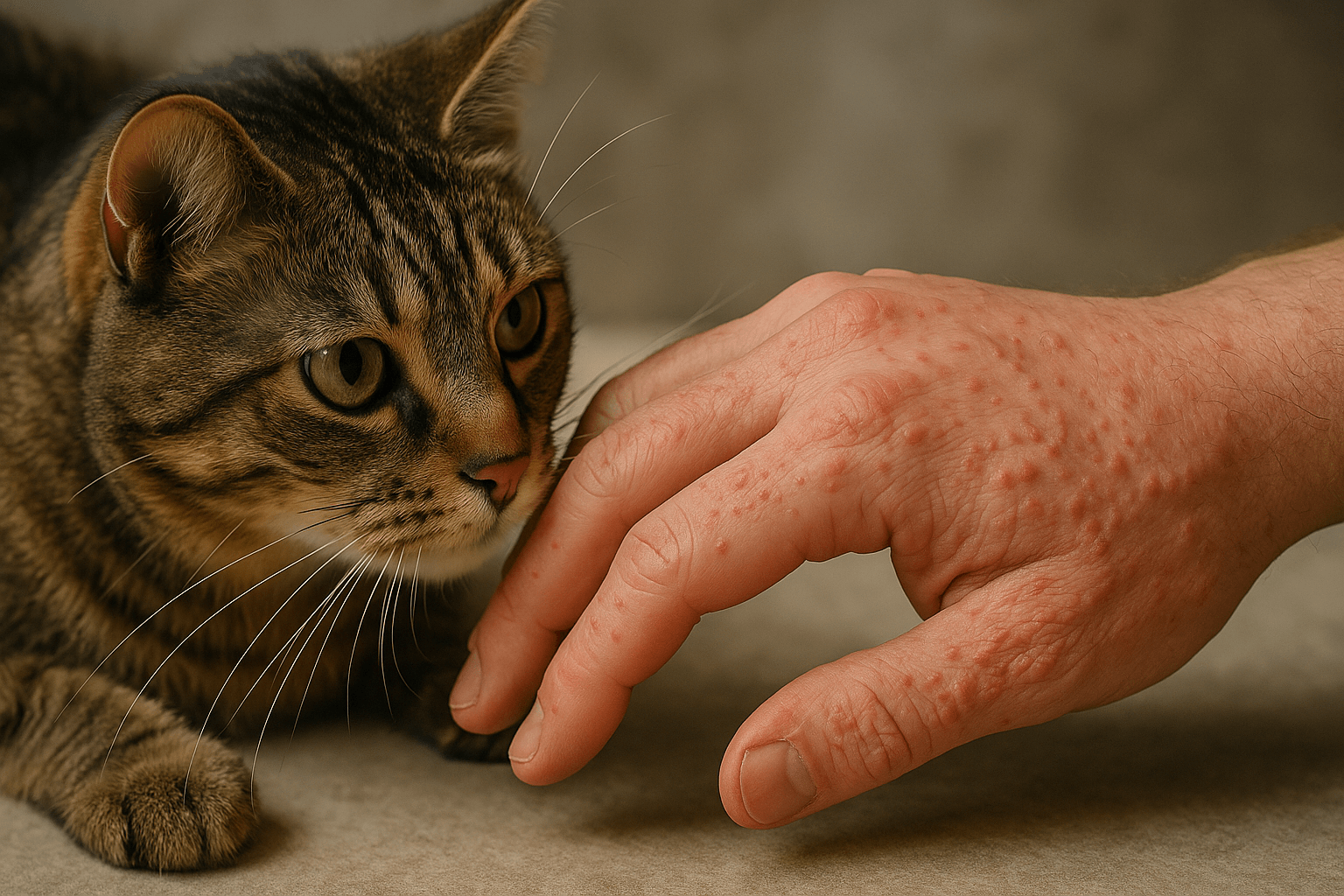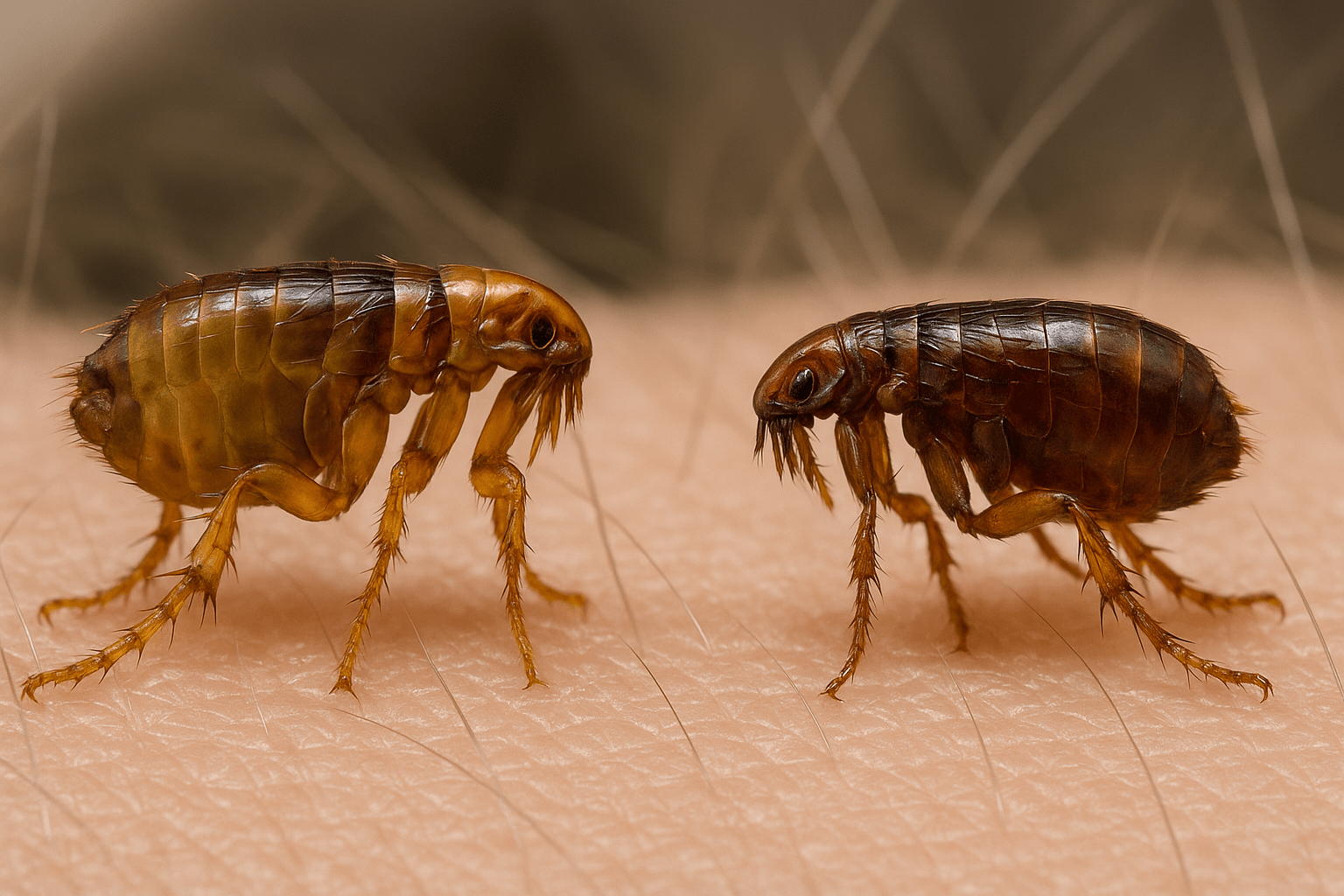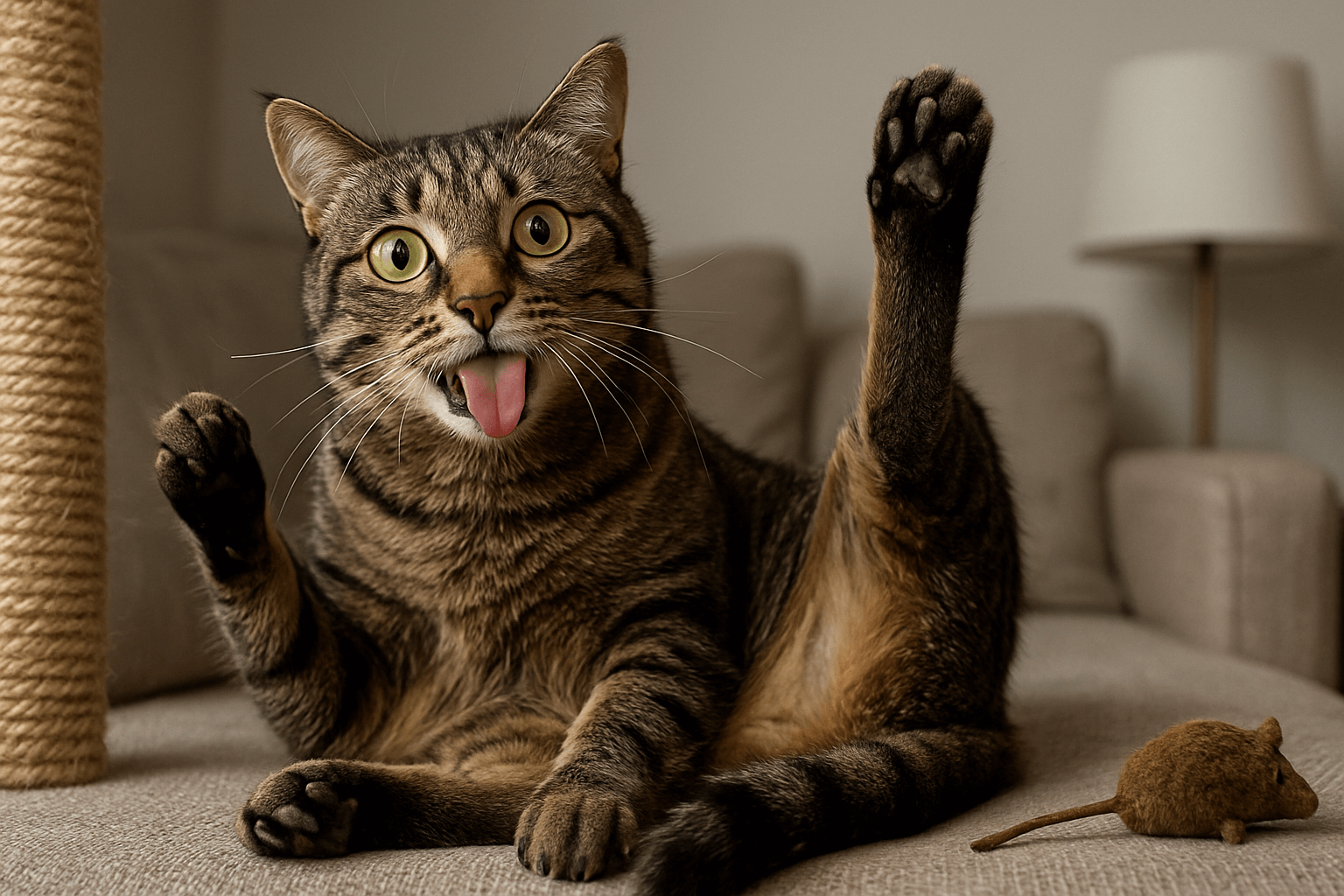Cat Overgrooming Scabs: Understanding the Causes and Solutions
Cats are meticulous groomers by nature, but sometimes their grooming habits can cross into problematic territory. Overgrooming, which often leads to scabs on their skin, is a sign that something isn’t quite right. Whether it’s stress, allergies, or an underlying medical issue, overgrooming can cause discomfort and damage to your cat’s skin. As a loving pet owner, it’s important to recognize the signs of overgrooming and understand what might be driving this behavior. In this article, we’ll explore the causes of cat overgrooming, how to identify scabs, and steps you can take to address the issue effectively.
Why Is My Cat Overgrooming? Identifying the Root Causes
Overgrooming in cats is rarely random—it’s usually a response to an underlying issue. By understanding the potential triggers, you can take steps to alleviate your cat’s discomfort and prevent further skin damage. Here are some common causes of overgrooming:
Allergies :
Cats can develop allergies to food, pollen, dust mites, or flea bites, leading to itchy skin and excessive licking.Stress or Anxiety :
Changes in the environment, such as moving homes or introducing a new pet, can cause stress-induced overgrooming.Parasites :
Fleas, ticks, or mites can irritate your cat’s skin, prompting them to groom excessively.Skin Infections :
Bacterial or fungal infections can cause itching and inflammation, leading to overgrooming.Pain or Discomfort :
Underlying conditions like arthritis or urinary tract infections may cause cats to lick certain areas in an attempt to soothe themselves.
Identifying the root cause of overgrooming is crucial for addressing the problem effectively. Once you know what’s triggering the behavior, you can work toward a solution.
Recognizing the Symptoms of Overgrooming and Scab Formation
If your cat is overgrooming, there are several physical and behavioral signs to watch for. These symptoms can help you determine whether your cat’s grooming habits have become excessive and require attention. Here’s what to look for:
Bald Patches :
Areas of thinning or missing fur are a clear indication of overgrooming.Visible Scabs :
Red, crusty, or open sores on the skin often result from constant licking or biting.Excessive Licking :
If your cat spends an abnormal amount of time grooming, it could be a red flag.Behavioral Changes :
Increased agitation, restlessness, or hiding may accompany overgrooming.Red or Irritated Skin :
Inflamed skin under the fur suggests irritation or infection.
These signs indicate that your cat is experiencing discomfort or distress. Early intervention can prevent further complications and help your cat feel better sooner.
Check this guide 👉Understanding Cat Scabs: Best 7 Health Tips!
Check this guide 👉Understanding Cat Nose Scabs: Best 7 Health Tips!

Causes of Overgrooming | Possible Solutions |
|---|---|
Allergies | Switch to hypoallergenic food or bedding |
Stress or Anxiety | Provide calming pheromones or enrichment |
Parasites | Use vet-recommended flea and tick treatments |
Skin Infections | Consult a vet for antibiotics or antifungals |
Pain or Discomfort | Schedule a vet checkup to diagnose issues |
Stopping the Cycle: Tips to Prevent Overgrooming in Cats
Preventing overgrooming involves addressing the root cause and creating a supportive environment for your cat. Here are some practical tips to help you curb this behavior and protect your cat’s skin:
Provide Mental Stimulation :
Interactive toys and puzzle feeders can keep your cat entertained and reduce stress-related grooming.Maintain a Clean Environment :
Regularly clean your home to minimize allergens and parasites that could irritate your cat’s skin.Use Protective Gear :
Consider using an Elizabethan collar or soft recovery suit to prevent further damage to scabs.Establish a Routine :
Consistent feeding, playtime, and grooming schedules can help reduce anxiety.Monitor Diet :
Ensure your cat’s diet is balanced and free of potential allergens.
By taking proactive measures, you can reduce the likelihood of overgrooming and promote healthier skin for your feline friend.
When Professional Help Is Needed: Recognizing the Warning Signs
While some cases of overgrooming can be managed at home, others require professional intervention. Knowing when to consult a veterinarian ensures your cat receives timely care. Here are signs that it’s time to seek help:
Persistent Scabs or Sores :
If scabs don’t heal or worsen despite treatment, it’s time to see a vet.Weight Loss or Lethargy :
These symptoms could indicate an underlying health issue beyond overgrooming.Changes in Appetite :
A sudden decrease or increase in eating habits may signal illness.Frequent Scratching or Chewing :
Excessive scratching alongside overgrooming points to severe irritation or infection.Unexplained Behavioral Shifts :
Sudden aggression, withdrawal, or clinginess may accompany physical discomfort.
A veterinarian can perform tests to diagnose the cause of overgrooming and recommend appropriate treatments. Don’t hesitate to seek professional guidance if you’re unsure about your cat’s condition.
Creating a Calmer Space: How Your Home Can Help
Sometimes, simple changes to your cat’s environment can significantly reduce overgrooming. Stress and anxiety are common triggers, and making your home more cat-friendly can alleviate these feelings. Here are some adjustments you can try:
Provide Safe Spaces :
Set up cozy hiding spots or elevated perches where your cat can retreat when feeling overwhelmed.Minimize Noise and Chaos :
Reduce loud noises or sudden disruptions that might stress your cat.Introduce Calming Scents :
Use products like lavender sprays or synthetic pheromone diffusers to create a soothing atmosphere.Limit Exposure to Other Pets :
If other animals in the house are causing tension, provide separate areas for eating, sleeping, and playing.Establish a Routine :
Cats thrive on predictability, so stick to regular feeding, play, and grooming schedules.
By tweaking your home environment, you can help your cat feel more secure and reduce their urge to overgroom. A calm cat is less likely to engage in excessive licking or biting.
Feeding for Wellness: How Diet Can Impact Overgrooming
A balanced diet plays a crucial role in maintaining your cat’s skin and coat health. Nutritional deficiencies or allergens in food can contribute to overgrooming. Here are some dietary tips to support your cat’s overall well-being:
Choose High-Quality Protein Sources :
Opt for foods rich in animal-based proteins, which are easier for cats to digest and utilize.Avoid Common Allergens :
Eliminate ingredients like corn, soy, or artificial additives that may trigger allergic reactions.Add Omega-3 Fatty Acids :
Supplements or foods containing fish oil can improve skin hydration and reduce inflammation.Ensure Proper Hydration :
Encourage water intake by providing wet food or investing in a cat water fountain.Consult a Vet About Special Diets :
Prescription diets or elimination diets can help identify food sensitivities.
Proper nutrition not only supports your cat’s physical health but also reduces the likelihood of overgrooming caused by skin irritation or allergies. Always consult your vet before making significant dietary changes.
Redirecting Focus: Activities to Keep Your Cat Engaged
Boredom and anxiety often drive cats to overgroom as a way to self-soothe. Providing alternative outlets for their energy can help redirect this behavior. Here are some behavioral techniques to try:
Interactive Play Sessions :
Use wand toys, laser pointers, or feather teasers to engage your cat in active play.Puzzle Feeders and Treat Balls :
Mental stimulation through food-dispensing toys can keep your cat entertained and distracted.Grooming Alternatives :
Offer soft brushes or grooming gloves to satisfy their need for tactile stimulation.Introduce New Toys Regularly :
Rotate toys every few days to maintain novelty and excitement.Clicker Training :
Teach tricks or reward calm behavior with positive reinforcement to build confidence.
By keeping your cat mentally and physically engaged, you can reduce their reliance on overgrooming as a coping mechanism. These activities not only entertain but also strengthen your bond with your furry friend.
Frequently Asked Questions About Cat Overgrooming and Scabs
Why does my cat have scabs on their back?
Scabs on the back are often caused by overgrooming due to fleas, allergies, or stress.
Can overgrooming lead to infections?
Yes, broken skin from overgrooming can become infected, requiring veterinary treatment.
How can I stop my cat from overgrooming?
Address the underlying cause, provide distractions, and consult a vet if necessary.
Are certain breeds more prone to overgrooming?
Some breeds, like Siamese or Oriental cats, are more likely to exhibit compulsive behaviors.
What should I do if my cat’s scabs bleed?
Clean the area gently, prevent further licking, and contact your vet for advice.
Final Thoughts: Supporting Your Cat Through Overgrooming Challenges
Overgrooming and the resulting scabs are not just cosmetic issues—they’re signals that your cat needs support. Whether it’s addressing allergies, reducing stress, or treating an infection, understanding the root cause is key to helping your feline friend feel comfortable again. By staying vigilant and seeking professional help when needed, you can ensure your cat stays happy and healthy. Remember, your cat relies on you to advocate for their well-being, and even small changes can make a big difference. With patience and care, you’ll help your furry companion overcome overgrooming and enjoy life to the fullest.
Canned Pumpkin for Cat Diarrhea: Best 7 Expert Tips! Natural remedy to firm stools, soothe upset bellies, and support gut health safely.
Can a Cat Give You Scabies? Best 7 Expert Tips! Discover the truth about feline mites, human skin risks, and how to protect yourself—without panic.
Cat Flea vs Human Flea: Best 7 Expert Tips! Discover the truth about bites, species, and how to eliminate infestations for good.
Weird Cat Behaviors: Best 7 Expert Tips! Discover why cats do strange things—and how to understand, not punish, their instincts for a happier home.





